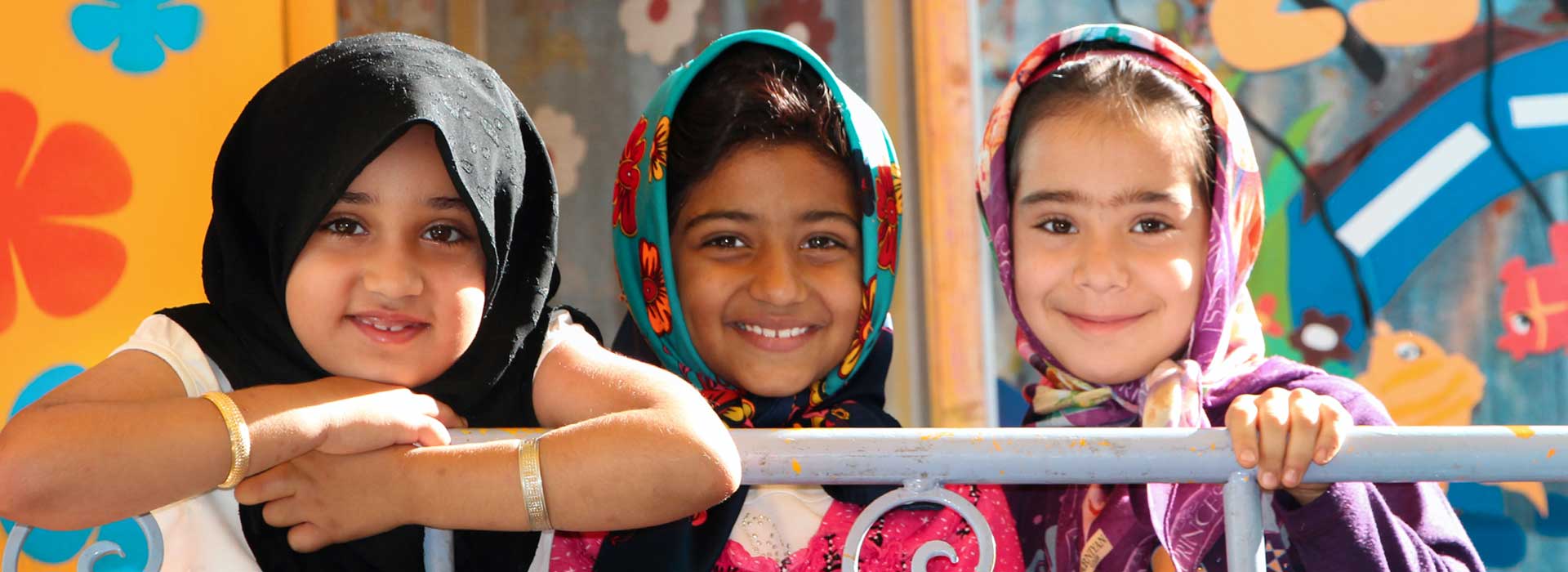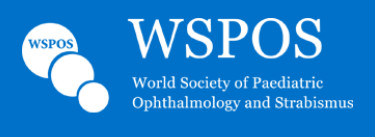Education
Case Report: Case 1
Case Presenters
Dr. Monica Samant is a Pediatric, Squint & Neuro Ophthalmology consultant at the Laxmi Eye Institute, Panvel, Mumbai, India. She has completed her Post graduate training in Ophthalmology from the D. Y. Patil Medical College, Kolhapur. She then pursued a Comprehensive Ophthalmology and Pediatric, Squint and Neuro – Ophthalmology Fellowship from the renowned L. V. Prasad Eye Institute, Hyderabad, India.
In Sept 2015, Dr. Samant underwent a Research Fellowship in Pediatric Ophthalmology at Children’s Hospital, University of Pittsburg [UPMC]. Her interests include Pediatric Cataracts, Squint and Genetics. She is involved in studies on the same and some of her work has been accepted and published Nationally as well as Internationally.
Status: CASE CLOSED
Members’ Responses:
Out of the members who responded to our Global Case Report Quiz, 19.40% would perform a YAG Laser followed by a Trabeculectomy, 27.80% would perform a Trabeculectomy followed by a YAG Laser & while 52.80% would perform a YAG Laser followed by some other procedure to treat Glaucoma.
Experts Opinion
Mary O’Hara

Dr. Mary O’Hara; MD is the Director of Pediatric Ophthalmology and Adult Strabismus at the Eye Center of University of California, Davis where she is a professor of ophthalmology and pediatrics. She completed her residency training at Brooke Army Medical Center in San Antonio, Texas and her fellowship in pediatric ophthalmology at the Wills Eye Institute in Philadelphia.
I had a similar case of sympathetic ophthalmia. My patient was treated with argon laser photocoagulation for Coat’s disease of the right eye at age 14 months. The right eye went on to total retinal detachment and then elevated intraocular pressure that was addressed with trans-scleral diode laser CPC after which the eye became phthisical. At age 27 months, he presented to our clinic with a blind painful right eye and an intermittently red left eye. The left eye had a shallow anterior chamber and 360 degrees posterior synechiae with elevated intraocular pressure (48 mm Hg). B scan showed thickened choroid and the retina was similar to your patient. The diagnosis of sympathetic ophthalmia of the left eye was entertained and the patient was placed on high-dose oral steroids and a trabeculectomy was done emergently. The right eye was enucleated in an attempt to control the sympathetic response. The child was then placed on infliximab and methotrexate which controlled the inflammation and the choroidal thickening but the intraocular pressure was uncontrolled and so a glaucoma drainange device and cataract extraction were performed. We elected not to place an intraocular lens because of concerns about inflammation and he has done well in aphakic spectacles with corrected visual acuity of 20/40 in his remaining eye.
A penetrating keratoplasty (PK) was done when the cornea decompensated. He subsequently ruptured the PK when he fell, despite wearing RecSpecs at the time! The original graft was salvaged. At the mother’s request, we considered discontinuation of infliximab and methotrexate as he had been quiet for several years. However, he broke through with uveitis during a growth spurt, so we realized that continued immunosuppression therapy was necessary. Recently, his intraocular pressure has been rising again and we are treating it medically. We are considering a second glaucoma drainage device if medication fails to control the intraocular pressure.From our experiences with our patient, we would recommend a glaucoma drainage device for control of his intraocular pressures. Also, the child needs to be followed carefully for recurrence of sympathetic ophthalmia. Although sympathetic ophthalmia in a child is a rare condition, several reports have documented recurrence, either soon after or years after, cessation of immunomodulating therapy. In the above case, growth of the child spurred a recurrence that was relieved with increasing therapy dose to reflect the child’s increased size.
Frank Martin

Dr. Frank Martin; MBBS, FRACS, FRANZCO was head of the Department of Ophthalmology at the Children’s Hospital at Westmead for 22 years and is currently a Visiting Medical Officer at the Sydney
Children’s Hospital Network (the Children’s Hospital at Westmead and Sydney Children’s Hospital, Randwick), as well as at Sydney Eye Hospital. He is Clinical Professor in the Department of Paediatrics and Child Health and Ophthalmology at the University of Sydney.
Dr. Martin has published over 40 articles, has written several text book chapters and is a reviewer for the British Journal of Ophthalmology. He was Editor of the Australian and New Zealand Journal of Ophthalmology for 11 years. He is the past President of the Asia Pacific Academy of Ophthalmology, he is current President of the Children’s Medical Research Institute at Westmead, the International Strabismus Association and the Asia Pacific Society of Paediatric Ophthalmology and Strabismus. In 2013 he was appointed to the Board of Trustees of the American Academy of Ophthalmology.
Frank also serves as a director of the Board of the International Council of Ophthalmology and was made an Honorary Professor of the Zhongshan Ophthalmic Center Sun Yat-sen University.
Trabeculectomy followed by YAG capsulotomy
This child is at risk of losing vision from glaucoma in the left eye as well as from sympathetic ophthalmia. There is also some risk of left amblyopia developing. The child probably already has a degree of amblyopia in the left eye. Glaucomatous visual loss is not reversible.I would arrange for the child to be immunosuppressed and then proceed with trabeculectomy. Any procedure including trabeculectomy and YAG capsulotomy carries the risk of reactivating sympathetic ophthalmia. This risk is greater if IOP is elevated. It is for this reason that I would aim to control the secondary glaucoma before proceeding with the YAG capsulotomy. In a four-year-old the risk of amblyopia developing is not a major concern.
It is very important for this child to have ongoing review.
Denise Satterfield

Dr. Denise Satterfield; MD, FAAP trained as an RN before going to medical school and was inspired in Nursing School to go into Pediatric Ophthalmology after scrubbing in on a strabismus case. She has a degree in Microbiology from U C San Diego and received her medical training including pediatric internship and ophthalmology residency at U C Davis School of Medicine. Her fellowship in Pediatric Ophthalmology and Strabismus was in San Francisco with Arthur Jampolsky and Alan Scott. She is in solo private practice in Sacramento and serves on the Volunteer Clinical Faculty for U C Davis Department of Ophthalmology, as well as for the Family Medicine Residency Programs at Mercy and Sutter Hospitals. In her spare time she loves to spend time with her husband and grown daughters, cook international cuisine and hike.
I would do trab and YAG simultaneously under same anesthesia, and if the anterior vitreous face against the PCO was a problem, could do anterior vitrectomy and direct posterior capsulotomy if necessary at the same time.
Alex Levin

Dr. Alex V. Levin; MD, MHSc, FAAP, FAAO, FRCSC completed a pediatric residency at the Children’s Hospital of Philadelphia and an ophthalmology residency at Wills Eye Hospital in
Philadelphia, followed by a pediatric ophthalmology fellowship at The Hospital for Sick Children. He is currently the Chief of Pediatric Ophthalmology and Ocular Genetics, Robison D. Harley, MD Endowed Chair in Pediatric Ophthalmology and Ocular Genetics, at Wills Eye Institute in Philadelphia. He completed his MHSc in Bioethics at the University of Toronto Joint Centre for Bioethics and was the Director of Postgraduate Bioethics Education at the University of Toronto for many years. He has been teaching bioethics for over 20 years and was one of the organizers, along with Dr. George Spaeth, of perhaps the first ophthalmology resident ethics course in North America in the 1980’s. He co-directs the Halifax Symposium on Ophthalmology Ethics. His areas of bioethics interest include child abuse research ethics, interactions with medical industry, surgical innovation, medical error disclosure, and the role of trainees in patient care.
Dr. Alex V. Levin; MD, MHSc, FAAP, FAAO, FRCSC completed a pediatric residency at the Children’s Hospital of Philadelphia and an ophthalmology residency at Wills Eye Hospital in Philadelphia, followed by a pediatric ophthalmology fellowship at The Hospital for Sick Children. He is currently the Chief of Pediatric Ophthalmology and Ocular Genetics, Robison D. Harley, MD Endowed Chair in Pediatric Ophthalmology and Ocular Genetics, at Wills Eye Institute in Philadelphia. He completed his MHSc in Bioethics at the University of Toronto Joint Centre for Bioethics and was the Director of Postgraduate Bioethics Education at the University of Toronto for many years. He has been teaching bioethics for over 20 years and was one of the organizers, along with Dr. George Spaeth, of perhaps the first ophthalmology resident ethics course in North America in the 1980’s. He co-directs the Halifax Symposium on Ophthalmology Ethics. His areas of bioethics interest include child abuse research ethics, interactions with medical industry, surgical innovation, medical error disclosure, and the role of trainees in patient care.

